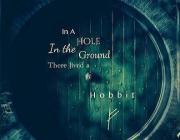Sugarman MA, Kirsch I, Huppert JD.
Obsessive-compulsive disorder has a reduced placebo (and antidepressant) response compared to other anxiety disorders: A meta-analysis. Journal of Affective Disorders [Internet]. 2017 :217.
Publisher's VersionAbstractPrevious studies have indicated that obsessive-compulsive disorder (OCD) might have a reduced placebo response compared to other anxiety-related disorders including generalized anxiety disorder, panic disorder, post-traumatic stress disorder, and social anxiety disorder. No previous analysis has directly compared antidepressant and placebo responses between OCD and these conditions.
Siev J, Abramovitch A, Ogen G, Burstein A, Halaj A, Huppert JD.
Religion, moral thought–action fusion, and obsessive–compulsive features in Israeli Muslims and Jews. Mental Health, Religion & Culture [Internet]. 2017;20 (7) :696 - 707.
Publisher's VersionAbstractPrevious studies suggest that the link between obsessive–compulsive (OC) symptoms and moral thought–action fusion (TAF) depends on religion; however, no study has compared Muslim and Jewish samples. We examined the relationships between OC symptoms, scrupulosity, religiosity, and moral TAF in Israeli Muslims and Jews. Religiosity was not associated with elevations in OC symptoms, although religiosity correlated with scrupulosity across the entire sample after controlling for depression and anxiety. Moral TAF was related to scrupulosity across the entire sample. The Muslim group had higher levels of OC symptoms, scrupulosity, and depressive symptoms than did the Jewish group, but the groups were equally religious. In addition, Muslims scored higher than did Jews on moral TAF even after controlling for symptoms; however, moral TAF was not related to scrupulosity within the Muslim group. In combination, these results imply that moral TAF depends on cultural and religious factors and does
Sugarman MA, Kirsch I, Huppert JD.
Review article: Obsessive-compulsive disorder has a reduced placebo (and antidepressant) response compared to other anxiety disorders: A meta-analysis. Journal of Affective Disorders [Internet]. 2017;218 :217 - 226.
Publisher's VersionAbstractBackground Previous studies have indicated that obsessive-compulsive disorder (OCD) might have a reduced placebo response compared to other anxiety-related disorders including generalized anxiety disorder, panic disorder, post-traumatic stress disorder, and social anxiety disorder. No previous analysis has directly compared antidepressant and placebo responses between OCD and these conditions.

